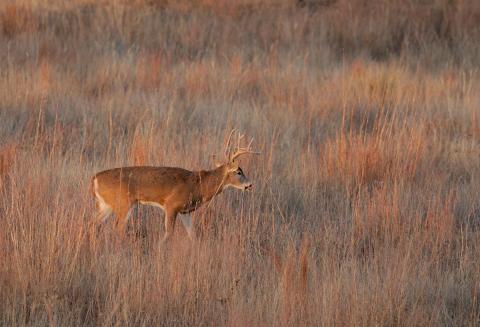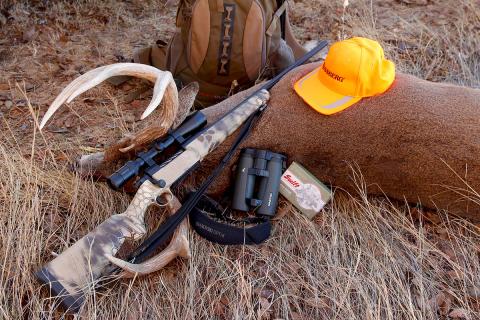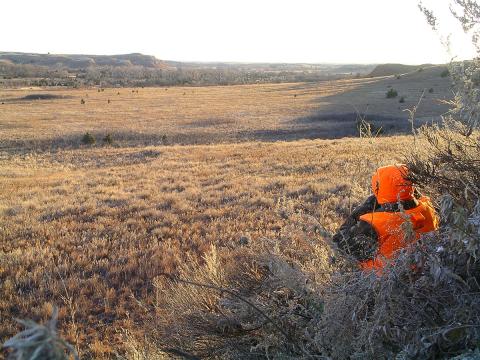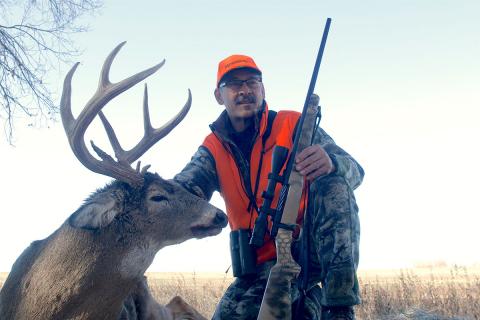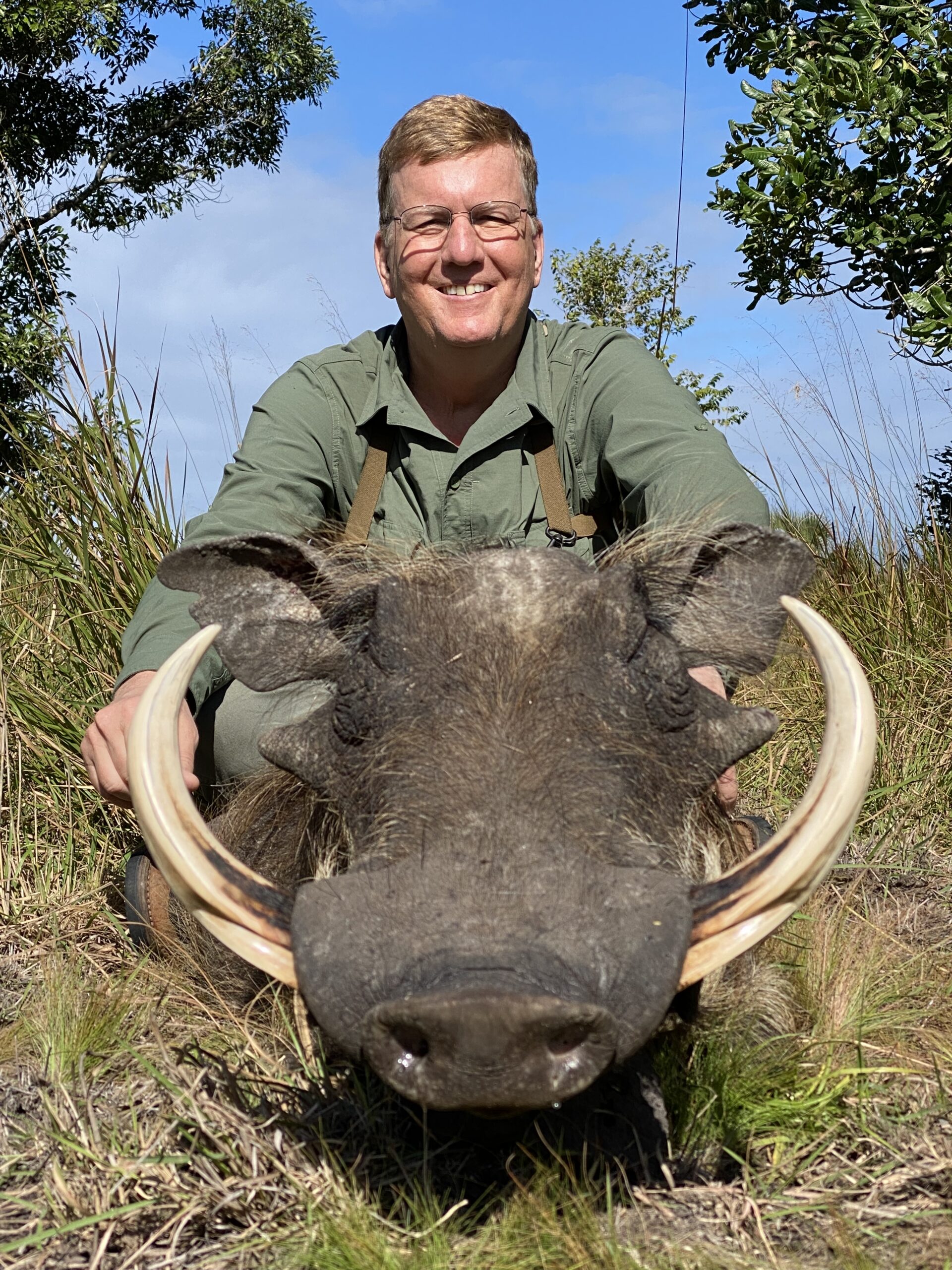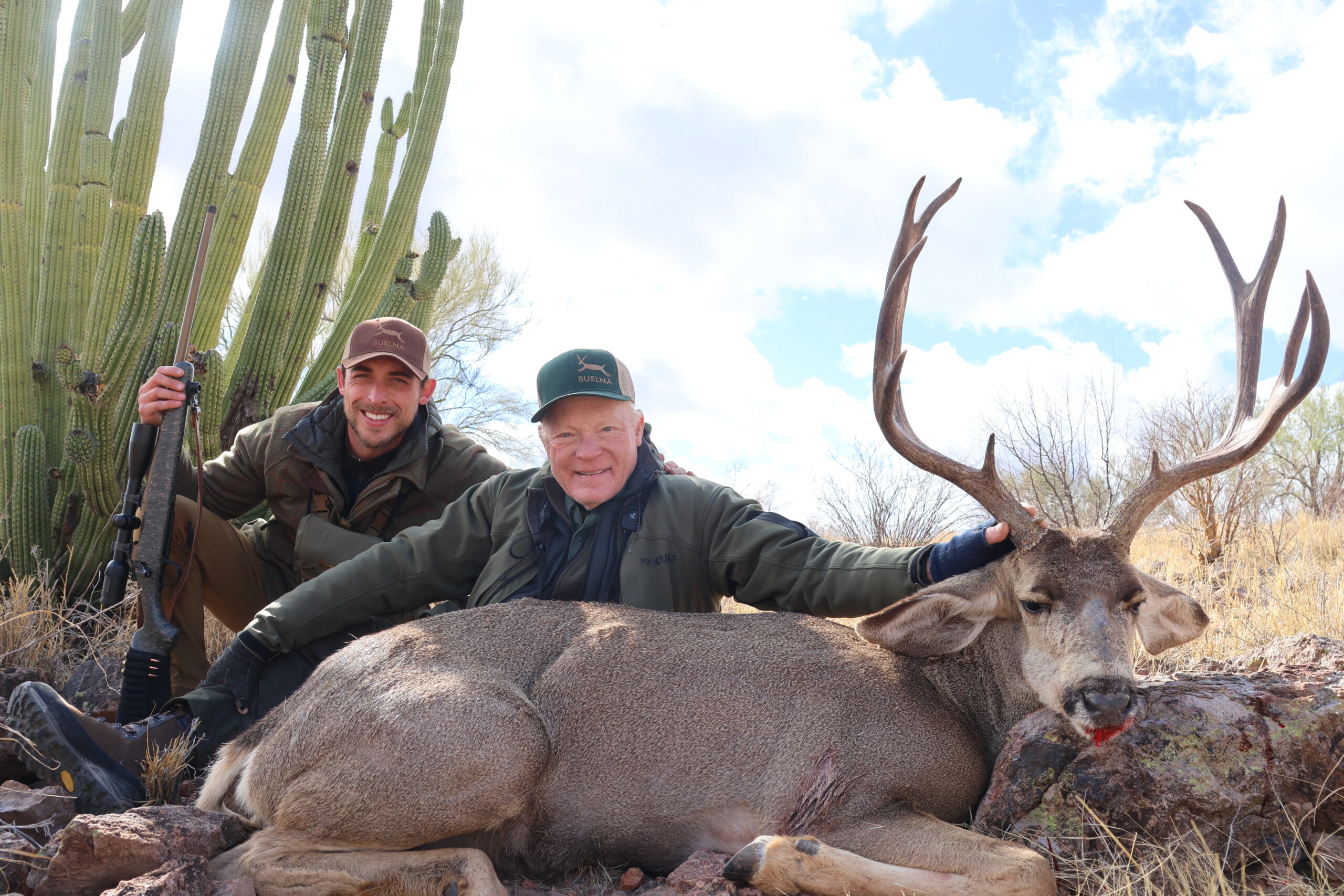Let’s not kid ourselves. Most hunters ambush whitetails. We used to still-hunt them, drive them, even stalk them. But one day a hunter with arboreal tendencies discovered the advantages of aerial attack, and active ground hunting waned. It seems as if 99 percent of whitetail hunters now wait in trees or ground blinds for a buck to grace them with its presence.
Not me. I’m a “one percenter.” And I suffer for it…
“You’ll mess up the hunting for everyone else.”
“You’ll just spook the deer onto the neighbors’ and they’ll shoot them.”
“You stink up the woods and disrupt their routines.”
“You’ll get lost. We won’t know where to find you. You’ll destroy humanity as we know it…”
Okay, I made up that last one. But most of the above accusations have been leveled whenever I’ve ask whitetail outfitters if I can abandon their blinds and go hunting. I understand their position. A single hunter padding through their hunting grounds could screw things up for everyone. Many whitetail outfitters operate on relatively small properties on which they’ve carefully calculated where and how many stands they can operate at one time. Which buck ghosts past which stand is up to the Fates, which is exactly why I don’t like to hunt from such stands.
The Fates have not always been generous to me. So I’m more than willing to tempt them. My guides and outfitters are not. That can cause friction, as was the case last season in Kansas.
I was hunting with Tall Tine Outfitters on 20,000 acres. This was roughly 40 miles from country I’ve been hunting for 35 years. TTO has been managing its leases for 14 years. By stressing the harvest of fully mature bucks only, TTO has been steadily increasing the average age of bucks its clients tag. In 2015 the average age was an amazing 5.37 years. Not a single buck was younger than 4.5. That’s a phenomenal average in a wild herd, and it was reflected by the trophy mounts on the lodge walls. Some of those racks could make an elk jealous. Bucks like that are a sure way to keep customers happy and a deer herd well balanced. But that won’t necessarily satisfy an antsy old prairie prowler like me.
My lupine nature is the problem. Like a wolf, I need to move, to prowl, to roam my hunting grounds, sniffing out my prey, then running close enough to strike. This unusual habit started on the prairies of South Dakota in the 1960s. It continued across the West and even into the forests of Kentucky. Still-hunting, glassing and stalking work well for me, but not so well for outfitters who have to put up with me. This includes poor Ted Jaycox, head honcho at TTO.
Last December Ted was hosting several writers hired by Mossberg to field test its Patriot Rifles and by Swarovski to test drive its binoculars and scopes. Over the past six years I’ve worked with at least a dozen different Mossberg rifles and at least that many Swarovski products and I’m still trying to test drive one into the ditch. This time my challenge was to get a Patriot Synthetic Kryptek Highlander bolt-action in 270 Winchester to fail. I failed. It didn’t. Darn thing loaded easily, cycled perfectly every time and consistently punched three Swift Cartridge Company loads (130-grain Sciroccos) inside 1.2-inch circles. I seem to recall spending upwards of $1,000 on custom rifles to achieve this sort of performance 25 years ago. Score one for Mossberg.
Optically, I was challenged to find something wrong with a Swarovski Z3 3-10×42 scope and an EL Range binocular with built-in laser rangefinder. These days Swarovski’s X5 and Z8i scopes have been getting all the buzz, but the Z3 3.5-10×42 with a ballistic reticle is trim, light, and versatile enough to handle any whitetail from 10 yards to 1,000. Thanks to Swarovski’s proprietary lens coatings, reflection loss is so insignificant that the 42mm objective transmits adequate light for clearly seeing black crosshairs on a whitetail’s chest well past shooting light. One evening a late-arriving buck forced me to sit my stand until full dark. A full hour after sunset I was still seeing not only the buck 80 yards away, but the crosshair hovering reassuringly over its chest. Score one for Swarovski.
I’ve loved the EL Range since the day I first laid eyes through one. The ability to glass and range simultaneously with the same instrument is convenient. That the EL Range does this with no appreciable loss in clarity or light transmission is remarkable.
As for ammo, I was free to test any, but the one that most intrigued me was that loaded by the new Swift Cartridge Company. I’ve been handloading Swift A-Frame and Scirocco bullets since the early 1990s. This is the first year Swift has simplified my life by selling factory loaded rounds, and they aren’t cutting corners. At the 2016 SCI convention, company president Bill Hober told me his goal was to produce the finest ammunition possible, cartridges that were not only straight, powerful and consistent, but waterproof. As he rightfully noted, we hunters spend a lot of time and resources to get in the position to shoot our game. Why risk any of it to sub-standard ammunition? “I don’t know about you,” Hober said, “but when I pull the trigger I want to hear the rifle go boom and my game to fall down. Every time. So we build the best. Best brass, best primers, best powder, best bullets put together with the best, precision machines. I’m not messing around here.”
Well, on this Kansas hunt I wasn’t messing around either. I’ve taken several bucks from this part of Kansas scoring 150 to 176 and seen a few pushing 190. The specimens on Ted’s lodge wall matched that — and more. He had trail cam photos of big bucks still on the prowl. If ever there was a guided hunt for free-range whitetails on which one could expect to shoot a spectacular buck, this was it. If Ted could put up with my whining without strangling me, there was a good chance I could complete my product testing on a high note.
But I didn’t. At least not during the first four days. Each morning and evening I deferred to Ted’s 14-years’ experience and sat in his blinds and tree stands. Oh, I begged, whined and complained as politely as I could for permission to wander, glass and stalk. But Ted’s reasoning was hard to counter. All his old, big bucks had been taken from stands. He had a hell of a track record. Why would my luck be any different? Obviously, the man did not know who he was up against.
Maybe I fidgeted too much. Maybe I smelled bad. Maybe my attitude warned the bucks away. I watched young bucks as close as 20 yards. I was tempted by a 150-class 3.5 year old at bow range, but it had too much potential to shoot before its time. One morning, 15 minutes before legal shooting light, a blocky, wide-racked buck with tall tines and lots of them ghosted by. But the biggest, oldest bucks I saw were where my 35 years of experience suggested they’d be — up on the prairies, 650 yards away according to the EL Range. The Mossberg and Scirocco could have reached them, but I wasn’t willing to trust my marksmanship from a treestand in a variable wind.
Here’s something I’ve observed during 50 years of western whitetail hunting: During the rut, prairie bucks routinely corral estrus does far from the madding crowds. This minimizes competition, allowing the tending buck to await his lady friend without interruption from every other male patrolling the traditional doe bedding areas. You find mating pairs in the craziest places, far from riparian brush. This is a glassing game akin to plains mule deer hunting, perfect for testing the Swarovskis and equally good for stretching the Mossberg and that sleek, high B.C. Scirocco bullet, as I indiscreetly hinted day after day — until I finally wore Ted down.
“Okay okay I’m tired of your whining! Go run the grass and do it your way!” Ted didn’t actually say that. He’s much too polite and diplomatic. But he had to be thinking it. Nonetheless, he humored me on the last day of the hunt, aided and abetted by a big buck he and one of his guides had spotted on a grassy prairie ridge while returning from dropping another hunter at his stand.
“How you going to get it?” Ted asked as we sat on a farm road glassing the buck and doe perched on the horizon amid a field of waving grasses that could have opened each episode of Little House on the Prairie. I punched the EL Range. Up flashed 617 in red. Again, the Mossberg and Scirocco were equal to the task, but the wind was picking up and I don’t shoot game at 600 yards anyway. The challenge, the fun, would be in the stalk.
Ted and I drove out of sight behind a distant ridge and began our initial approach. “There he is,” Ted said when we peeked over the first rise. “Just see his horns sticking up. What’s the range?”
“Four eighty.” We slinked back under the hill, circled, came up again.
“Still there. Hey, that’s not a doe. It’s a spike buck.”
“Just three fifty now. I could shoot from here. But we can get closer. See that old post on the hill? Let’s go.”
The sun was shining. We shed jackets. I gave Ted my EL Range. Then we crawled, using antler tips as our beacon, feeling the wind steady, quartering left. We reached the post. “It’s 173 yards now.” The grass prevented a clean shot and I wasn’t going to risk an offhand shot. Not when we could crawl closer.
The tension was delicious, but soon the anxiety climbed. Our buck rose and began sauntering toward a brushy draw, exposing little more than tines. “Looking for shade,” Ted noted. We kept crawling. Our quarry slipped into a patch of plum brush under an elm. Fifteen more yards and we wriggled to a slope where I could shoot over the grass from a sitting position. “Ninety yards!” Ted said. I propped my portable shooting sticks under the fore-end and chambered a round.
“Where’s the buck?” I asked.
A pregnant pause. Then “I see tines. I think he bedded in that thicket.”
“Rattle him out!” I hissed.
“You sure?” Ted asked.
“Sure. Let’s go for it.” I grunted. Ted tickled the Rattling Forks. Our buck didn’t emerge. “Hit ‘em harder,” I stage whispered. Ted did. And here came Mr. Magnificent, head up, antlers towering, staring, walking right toward two grown men sitting in waist-high grass in full sunshine. I held just above the brisket and hit the Mossberg’s launch switch. The sleek, boattailed, high B.C. Scirocco is designed for long range shooting and optimum terminal performance at 300 yards and beyond, but its thick copper jacket and bonded lead core were more than tough enough to plow through the brisket and deep into the vitals. The buck launched the traditional heart-shot dash and collapsed in the tall grass.
This buck was everything Tall Tines advertises. Old, heavy, impressive. It carried four tines per side, but they sprouted from heavy, towering main beams deeply ribbed with the tracks of the arteries that had fed the growing bones. Ted taped out a total of 151 inches. That’s a Great Eight, and we got it by climbing out of the stands and hunting the old fashioned way.
I want to commend Mr. Jaycox for managing his hunts so well that clients routinely take fully mature bucks, year after year. I want to thank him for allowing me to break with tradition. And I want to thank Mossberg, Swarovski and Swift for trusting me with their products. I only regret that I wasn’t able to uncover any flaws. Perhaps we should try again next year.–Ron Spomer

